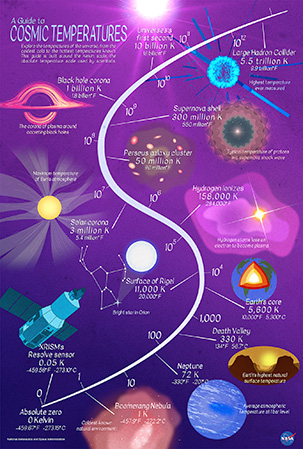Welcoming a New Member of the X-ray Family

Artist's concept of the XRISM (X-ray Imaging and Spectroscopy Mission) spacecraft.
Credit: NASA's Goddard Space Flight Center Conceptual Image Lab
On September 6th, a new X-ray telescope was launched into space, joining the Chandra X-ray Observatory, XMM-Newton, and others already exploring the high-energy Universe.
The X-ray Imaging and Spectroscopy Mission (XRISM, pronounced “crism”) is led by the Japanese Aerospace Exploration Agency, or JAXA, with contributions from NASA and the European Space Agency.
What will scientists use XRISM for? This feature from NASA describes some of what is can do and the embedded video does an excellent job explaining why ‘spectroscopy’ is so important to astronomers and their study of the Universe.
https://www.nasa.gov/feature/feature/2023/xrism-spacecraft-will-open-new...

A Guide to Cosmic Temperatures [More Versions]
Credit: NASA's Goddard Space Flight Center/Scott Wiessinger
So why do we need more than one X-ray telescope? Chandra and XRISM provide highly-complementary capabilities, with Chandra’s high-resolution images and modest spectral resolution well matched to XRISM’s ability to provide high-resolution spectra of diffuse sources at modest spatial resolution.
These capabilities will be used in concert to probe complex astrophysical problems, such as how gas at the cores of clusters of galaxies is heated and expelled so that these massive systems do not collapse in upon themselves. The two observatories will also be used to learn how shocks from exploding stars stir the gas and dust in our Galaxy, ultimately leading to the formation of new stars.
You can learn more about this international effort at https://xrism.isas.jaxa.jp/en/ and https://www.nasa.gov/content/goddard/xrism-x-ray-imaging-and-spectroscop... and stay tuned to astronomy news sites to hear about the launch!
—Megan Watzke, CXC
Category:
- Log in to post comments
